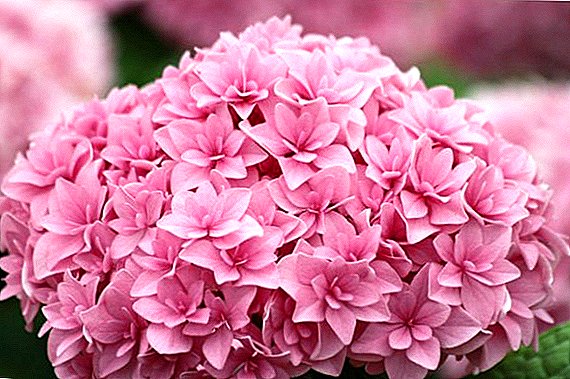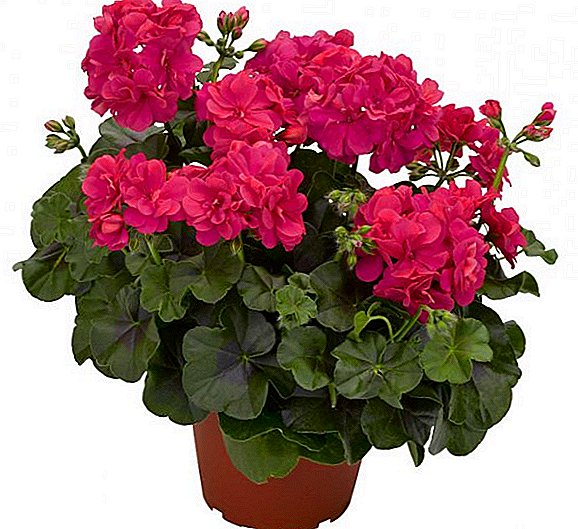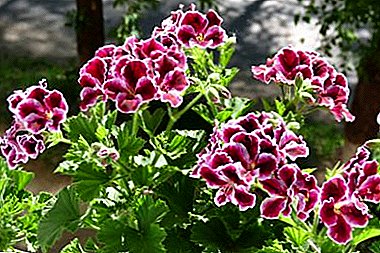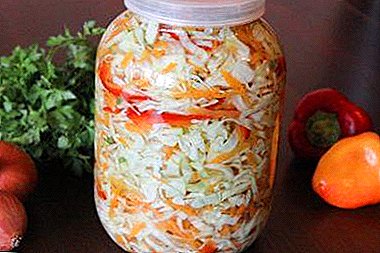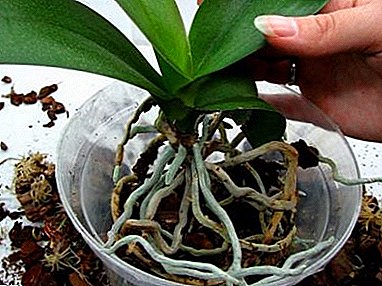
The orchid is a refined houseplant belonging to the Orchid family. When growing a flower, a mandatory measure for its care is transplanting. These are necessary activities for the orchid, as the plant does not like to be in the same environment for a long time and begins to get sick.
In early autumn, the light day is still quite long, and flower buds can wake up in the orchid. If your orchid started sprouting in September-October, then, in general, this is a sufficiently favorable time for the peduncle to form, and the orchid pleased you with a new lush flowering.
Life cycle in the autumn
After that, the flower should be carefully examined so that there are no pests on it. Otherwise, from one plant can get the rest.
 In September, you need to reduce the amount of nutrients applied.. Also, the changes will affect the temperature - at night - 14-24 degrees. These activities will be an excellent preparation for winter orchids.
In September, you need to reduce the amount of nutrients applied.. Also, the changes will affect the temperature - at night - 14-24 degrees. These activities will be an excellent preparation for winter orchids.
With the onset of October, some types of orchids bloom, while others go "for a winter holiday." And the latter begin to drop the foliage, but this is not a reason for experiences, since this process is natural.
In November, fertilizing can be excluded for many orchid species, except for those that have to be cared for throughout the year. In any case, it is necessary to provide intensive watering to the flower, as the air in the room is too dry due to the heating devices.
In addition, at the end of autumn, the day is not long, so will have to think about additional lighting using special lamps.
Can I have a transplant in October?
For orchid transplantation, the time of year does not matter - with the same success it is possible to carry out transplantation in winter, summer and autumn. But the most favorable time for these works is spring. If the need to update the substrate has arisen in one of the autumn months - in September, October or November, then the transplant must be done taking into account the type of plant. The main thing is that the procedure does not coincide with flowering.
What methods are used?
There are several ways to transplant orchids in the fall:
- Landing on the block. The essence of the method is that the root system must be tied to the block with a thin line. To prevent the roots from drying out, moss can be used. They need to cover the roots and cover the block itself.
- Imitation of natural conditions. As you know, orchids grow in the wild. To make the plant feel comfortable, you need to provide it with the usual tropical air humidity.
If it was decided to transfer the orchid to the block, then it will have to be maintained in a greenhouse with high humidity.
- Handling method. In this case, the orchid must be transplanted into a new container with old soil mixture, adding a new one only at the edges. This method is less traumatic for a flower, but for this you have to prepare a larger pot.
The choice of capacity and soil
 For planting orchids, you must use a new container, which is slightly larger than the previous one. In the bottom of the pot make about 4 holes with a diameter of 5 mm. If there are no such holes or they are too small, then this problem can be solved with a sharp knife.
For planting orchids, you must use a new container, which is slightly larger than the previous one. In the bottom of the pot make about 4 holes with a diameter of 5 mm. If there are no such holes or they are too small, then this problem can be solved with a sharp knife.
The soil for planting orchids should be wet. You can buy a ready-made substrate in a flower shop or prepare it yourself.
In the case of the second option, it is necessary to mix in equal proportions such components.:
- pine bark;
- sphagnum moss;
- fern root;
- charcoal;
- broken walnut shells;
- expanded clay.
Pine bark and moss should be soaked for 1 hour in boiled water. If for the preparation of the soil to use the collected bark in the forest, then chop it into pieces of 1-3 cm in size, and then boil it for 15 minutes. This will kill all pathogenic bacteria and insect larvae.
Training
Preparatory activities are as follows.:
- Carefully inspect and evaluate the condition of the plant.
If the flowers have fallen, but at the same time the flower stalks are green, with live buds on the tips, then they do not need to be removed.
- Orchid leaves should be hard, dense and bright green.
- The roots through the walls of the clear pot should be thick and gray-green.
What to consider at home?
If there is no doubt whether it is necessary to replant the orchid in the fall, then the procedure can be carried out after a detailed acquaintance with the nuances.
Extract from the pot
 The first thing you need to carefully remove the plant from the old capacity. Performing these works, it is important not to injure the fragile roots of the flower.
The first thing you need to carefully remove the plant from the old capacity. Performing these works, it is important not to injure the fragile roots of the flower.
You can do it carefully if you squeeze the pot with your hands. Then the soil and roots move away from the walls.
After that, you can proceed to the withdrawal of plants from the pot. If you have any difficulties, you can cut the container with scissors.
Flushing
When the root ball was removed from the ground, then gently straighten it with your hands. Thus, it is possible to clean the roots of lumps of the substrate. Then rinse them with warm water to remove the remnants of the earth.
Pruning roots and leaves
After washing the roots, you can proceed to the removal of dried and rotted plant elements.. For these purposes it is necessary to use sharp scissors, which were previously disinfected.
The cuts should be treated with antibacterial agent or activated carbon powder. During this procedure, it is important not to touch the healthy roots, as this can provoke the development of the disease.
Drying
Before you transplant a plant into a new container, you need to dry it thoroughly. To do this, simply lay the orchid on a clean cloth for 2 hours.
Moving to a new substrate
The process of planting a flower in a new container is as follows.:
 In a pot with prepared drainage to install the plant.
In a pot with prepared drainage to install the plant.- Gradually add the soil mixture, distributing it with a thin stick so that there is no space between the roots.
- To soil became more dense, you need to knock on the walls of the pot.
- Do not press or try to push as much soil as possible into the container. It can injure the roots.
- If the long roots do not fit into the pot, then they are best left outside. Then the flower with their help will receive additional moisture from the air.
First watering
After transplanting an orchid for 5 days it should not be watered. This time must be waited for all the wounds from the cuts to heal. Instead of watering, you can spray the leaves, otherwise the flower may dry out..
Does the peduncle form?
This flower is very sensitive, and transplantation may have a bad effect on its appearance, as a result of which yellowing on the leaves may occur. This happens mainly in violation of safety rules. If the transplant is done according to the rules, the orchid may bloom in a few weeks..
Possible problems and difficulties
During transplantation, many flower growers, due to inexperience, make a number of mistakes that adversely affect the health of the orchid.
 Here are the most common problems.:
Here are the most common problems.:
- wrong size pot;
- poor-quality substrate or improperly cooked;
- failure to follow the transplant instructions;
- transplanting during flowering without the urgent need.
The most common problem is root decay. This happens if after buying an orchid it is transplanted without removing the sphagnum.
Plant Care
After orchid transplantation, it is important to properly care for it, following the following guidelines.:
- Move the pot in the shade and as much as possible protect the flower from the influence of direct sunlight (8-10 days).
- The temperature in the room where the orchid is located should not exceed 20 degrees.
- The first humidification spend 5 days after transplantation. Before watering, be sure to boil water. Then dip the orchid pot in the water for 30 minutes. The following moisturizing is carried out no earlier than 2 weeks. The leaves can also be watered with warm purified water.
- After 30 days, you can apply dressing using mineral and organic compounds that contain potassium, magnesium, and nitrogen. The next time you use the dressing in 20 days.
- After transplanting orchid can get sick. Also, the plant slows down the growth of the root system.Experienced growers recommend not to replant the plant too often. It is enough to do it once every 2-3 years.
Orchid transplantation is a complex and responsible process.. If all the work was done correctly and efficiently, then the orchid will receive minimal stress. In addition, she will even be able to bloom in a few weeks and delight those around her with her beauty and healthy look.


 In a pot with prepared drainage to install the plant.
In a pot with prepared drainage to install the plant.


